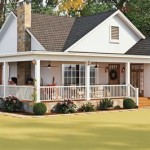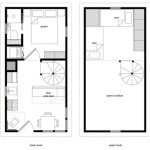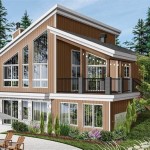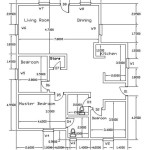Kitchen Plan With Dimensions in mm: A Comprehensive Guide
Designing a kitchen involves meticulous planning, especially when it comes to dimensions. Precise measurements in millimeters (mm) are crucial for ensuring a functional and visually appealing space. This article provides a comprehensive guide to creating a kitchen plan with dimensions in mm, covering essential considerations and practical tips for achieving optimal results.
1. Define the Kitchen Layout and Space
The first step in planning a kitchen is to determine the layout and available space. Consider the existing structure, including walls, windows, and doors. Measure the length and width of the room, along with the height of the ceiling and any obstructions, such as beams or columns. It's also essential to identify potential problem areas, such as uneven floors or limited natural light.
Use a tape measure to record all dimensions in mm and create a detailed sketch of the kitchen space. This sketch will serve as the foundation for your kitchen plan. Be sure to note any existing appliances, fixtures, and furniture that will remain in the kitchen. This information will help you determine the placement of new appliances and cabinetry.
2. Plan the Kitchen Work Triangle
The work triangle, formed by connecting the refrigerator, sink, and stovetop, is a fundamental principle in kitchen design. It ensures efficient movement and workflow within the kitchen. Ideally, the three points of the triangle should be spaced 4 feet to 6 feet apart. This distance allows for comfortable movement and prevents bottlenecks.
When planning the work triangle, consider the following dimensions:
-
Refrigerator:
600 mm to 900 mm wide, 1700 mm to 1800 mm high, 600 mm to 700 mm deep -
Sink:
600 mm to 900 mm wide, 500 mm to 600 mm deep -
Stovetop:
600 mm to 900 mm wide, 500 mm to 600 mm deep
Adjust these dimensions based on your specific needs and preferences. For instance, if you enjoy cooking, you may opt for a larger stovetop or additional counter space around the sink. Remember to account for the opening and closing movements of doors and drawers when designing the work triangle.
3. Choose Appliances and Cabinetry
Once you have established the layout and work triangle, you can start selecting appliances and cabinetry. Before making any decisions, consider your cooking style, family size, and budget. Measure existing appliances or research the dimensions of new appliances you plan to purchase. This information will help you determine the required cabinet sizes and the overall flow of the kitchen.
Cabinetry is a major investment in kitchen design, and it's essential to choose styles and sizes that meet your storage and aesthetic needs. Consider the following dimensions when selecting cabinets:
-
Base cabinets:
600 mm to 900 mm wide, 850 mm high, 550 mm to 600 mm deep -
Wall cabinets:
300 mm to 900 mm wide, 700 mm to 850 mm high, 300 mm to 350 mm deep -
Drawers:
300 mm to 900 mm wide, 150 mm to 500 mm deep
Ensure that the cabinet dimensions allow for adequate storage and countertop space. Consider the height of counters, which should be typically around 900 mm to 950 mm, and the width of walkways, ideally at least 900 mm to 1200 mm.
4. Incorporate Ergonomics and Functionality
Ergonomics plays a crucial role in kitchen design, ensuring comfort and ease of use. Consider the following ergonomic principles:
-
Countertop height:
Adjust the countertop height to suit the user's stature. Typically, 900 mm to 950 mm is a comfortable height for most people. -
Reach zones:
Design the kitchen layout to minimize unnecessary movements. Frequently used items should be within easy reach, while less frequently used items can be stored higher. -
Lighting:
Proper lighting is essential for creating a comfortable and functional kitchen. Consider both natural and artificial lighting sources, ensuring adequate illumination for all work areas.
Optimize functionality by considering frequently used items and integrating them into the design. For example, placing storage drawers near the sink or incorporating pull-out shelves for easy access to pots and pans.
5. Seek Professional Help
While this guide provides a framework for planning a kitchen with dimensions in mm, seeking professional assistance from a kitchen designer or architect can offer significant benefits. They can help you develop a detailed plan, incorporate specific materials, and ensure compliance with building codes and safety regulations.
A professional can also provide expert advice on:
-
Space optimization:
maximizing functionality, eliminating wasted space. -
Material selection:
choosing durable, high-quality materials that suit your budget and style. -
Lighting design:
creating a balanced and functional lighting scheme. -
Ventilation systems:
ensuring proper air circulation and exhaust for cooking fumes.

7 Types Of Kitchen Floor Plans With Dimensions Foyr Neo

7 Types Of Kitchen Floor Plans With Dimensions Foyr Neo

Kitchen Dimensions Interior Design Decor Layout Plans

Kitchen Dimensions Design Interior Guidelines Layakarchitect

Free Editable Kitchen Layouts Edrawmax

Kitchen Design Layout Ideas 1088x642

Five Basic Kitchen Layouts Homeworks Construction Inc

How To Design A Kitchen The Complete Technical Guide Biblus

7 Types Of Kitchen Floor Plans With Dimensions Foyr Neo

Kitchen Design Principles Home Tutorials
Related Posts








